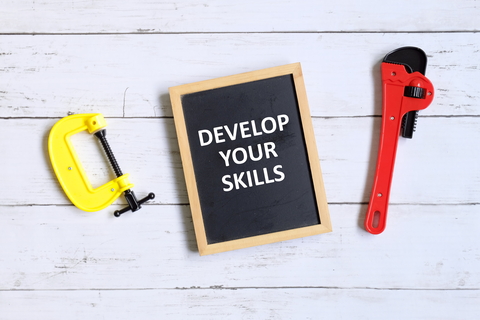Post-flop play is where we make most of our profit. Unfortunately, it is also where players lose a lot of money. Many players make critical post-flop PLO mistakes that cost them huge amounts of money.
This article will dive into some of the most critical post-flop mistakes. If you are interested in other mistakes, make sure to look at our first two articles in this series, which cover general PLO mistakes and pre-flop PLO mistakes.
“Fix These PLO Mistakes and Make More Money”
“Fix These Pre-Flop PLO Mistakes and Make More Money”
Table of Contents
Post-Flop PLO Mistake #1: Continuation Betting Too Much
Many players moving from No-Limit Hold’em make the mistake of continuation betting, or c-betting, too often after raising preflop. This tends to get them in bad situations versus observant players and costs them a lot of money over time.
Players making this mistake often have a betting range that tends to be filled with all their strong hands, many medium-strength hands, and some weaker hands. This range construction opens them up to a couple of different issues.
First, their betting range is going to be vulnerable to raises. Yes, their range will have most of their strong hands, but it will also have many medium-strength hands. These medium-strength hands will have a hard time facing aggression. Aggressive players will often put them in tough spots, and they will end up folding on the flop or to further aggression on later streets.
The second issue is their checking range is now very vulnerable. When players like this decide to check instead of c-bet, they rarely have a hand that can continue comfortably. Observant players will notice this and likely put a lot of pressure on the player, putting them in spots where they will fold a high percentage of the time.
Working with a good PLO trainer is a good way to start understanding what types of hands make up a good c-betting range.
Post-Flop PLO Mistake #2: Playing Weak Draws
In No-Limit Texas Hold’em, it is common to play non-nutted draws. While hands like flush over flush or straight over straight happen in Hold’em, they are not nearly as common as in PLO. When you make a non-nutted straight or flush in Hold’em, it will often be the best hand, whereas this is rarely the case in PLO.
In PLO, players often lose their stack drawing to hands like third or fourth nut-flush or the bottom end of a straight. If you hit your money card and get a lot of action, you are almost always behind. While this is often an extension of players playing poor preflop starting hands, this is not always true.
Often, players start with a good starting hand like A♣8♠7♣6♠ only to hit a flop like K♠J♦2♠. Too often, players decide to play this small flush draw, especially for a smaller bet. These players fail to understand that these smaller suited cards add strength to the hand in combination with other draws but play poorly as a one-way weak flush draw.
Another trouble spot is when the flop comes something like Td9c2s. The player has now flopped a 13-card wrap with two backdoor flush draws. The problem is that this player has the bottom end of the wrap. Good players refer to this as the idiot end of the straight. When you make your hand and get action, you are often way behind.
All these hands will cause you to win a little or lose a lot. Don’t make the mistake of bleeding money with them. Be the player winning money from the player playing these bad draws.
Post-Flop PLO Mistake #3: Overestimating Implied Odds When Drawing
This is a mistake that you often see players make when they are playing a one-way draw where they are drawing to just a straight or a flush. You will see these players call bets in position only to make their hand and get a fold when they bet for value.
These players consistently overestimate their implied odds of getting paid off when they hit their hand. The problem is that when the board texture significantly shifts to a straight, a flush, or a full-house texture, it shuts down the action in PLO. You are rarely going to get paid off for a large amount.
You should often play these hands aggressively as part of a multiway hand that you apply pressure with. Using the Ac8s7c6s hand as an example, you are wanting to hit a board like Js6c5s where you can apply pressure and play aggressively.
Post-Flop PLO Mistake #4: Overplaying Medium Strength Hands
Newer players tend to overplay medium-strength hands like overpairs and two pair. They will often play these hands fast and aggressively, often losing too much money with them. It’s not uncommon to see a player with A♥A♦K♦4♥ get very aggressive on a board like T♠7♣2♠, trying to protect their hand.
This is another common mistake from players moving to PLO from Hold’em. While an overpair in Hold’em is very strong, by itself, it is not that strong in PLO. There are a lot of one-pair combo hands that connect with this flop that will have 45% equity versus AA with no backup. There are also a lot of hands that connect with this flop that make sets and two-pair with backup.
Good players will put a lot of pressure on the pre-flop raiser in these positions. This leads to the player either having to fold their medium-strength hand or play a big pot with it. Both are a recipe for losing a lot of money.
Another medium-strength hand players often overplay is two pair with no backup. On the flop T♠9♠2♣, K♥T♣9♣8♥ looks nice but versus an overpair with a flush draw or an overpair with a straight draw, it is around even money. If you start putting in a lot of money and getting action, you are likely not in as great of shape as you would like.
PLO is a complex game that takes a lot of effort and time to get good but fixing these critical post-flop mistakes will help you immediately start saving money. Additionally, using good tools and strategy content will help you quickly eliminate these mistakes and play better.
If you enjoy discussing and studying PLO, join our PLO Study Group on Discord and grow alongside many other dedicated players working to improve their game. Also, make sure to follow me on Twitter and Facebook to stay updated on content.






